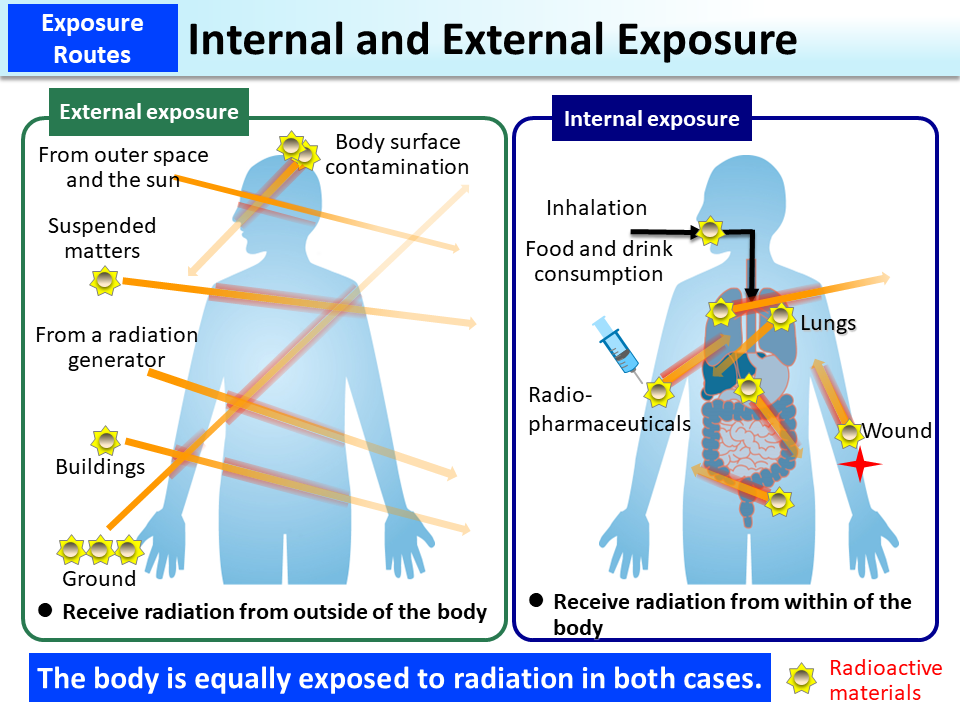Internal and External Exposure
“Radiation exposure” refers to the situation where the body is exposed to radiation. There are two types of radiation exposure, “internal exposure” and “external exposure.”
External exposure means to receive radiation that comes from radioactive materials existing on the ground or in the air, or attached to clothes or the surface of the body (p.25 of Vol. 1, “External Exposure and Skin”).
Conversely, internal exposure is caused (i) when a person has a meal and takes in radioactive materials in the food or drink (ingestion); (ii) when a person breathes in radioactive materials in the air (inhalation); (iii) when radioactive materials are absorbed through the skin (percutaneous absorption); (iv) when radioactive materials enter the body from a wound (wound contamination); and (v) when radiopharmaceuticals containing radioactive materials are administered for the purpose of medical treatment. Once radioactive materials enter the body, the body will continue to be exposed to radiation until the radioactive materials are excreted in the urine or feces or as the radioactivity weakens over time (p.26 of Vol. 1, “Internal Exposure”).
The difference between internal exposure and external exposure lies in whether the source that emits radiation is inside or outside the body. The body is equally exposed to radiation in both cases (p.24 of Vol. 1, “Various Forms of Exposure”).
The terms “internal exposure” and “external exposure” are used irrespective of types of radiation, i.e., naturally occurring radiation, accident-derived radiation or medical radiation (p.63 of Vol. 1, “Exposure Dose from Natural and Artificial Radiation”).
- Included in this reference material on March 31, 2013
- Updated on March 31, 2019

